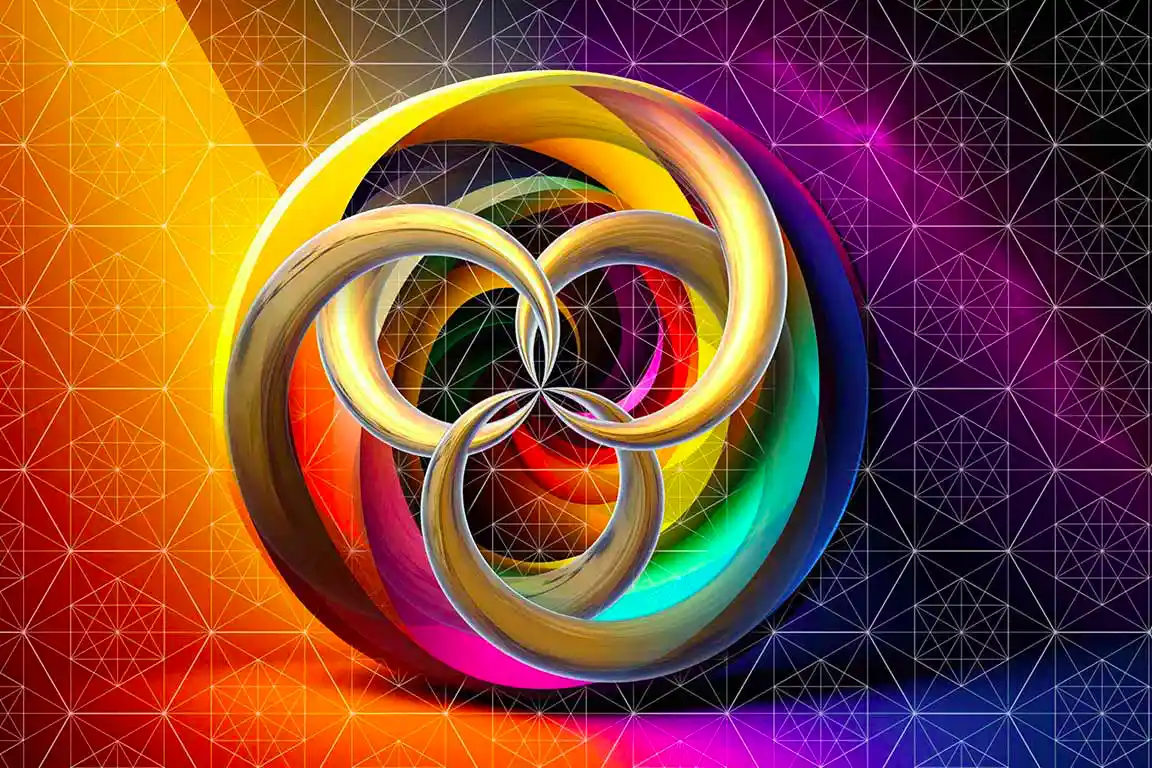©2023 KHRISTRON, ALL RIGHT RESERVE

By Khristron.com
Sacred geometry is an ancient study that uses mathematics and geometry to explain the interconnectedness of life and the Universe. It has become increasingly popular in recent years as people have begun to explore the spiritual and metaphysical aspects of life. It has been used for centuries to explain the patterns we see in the world around us. It is believed that this connection can be used to unlock deeper understanding about the universe and our place in it.
At its core, sacred geometry is the study of how shapes and patterns are connected in the natural world. It is based on the idea that all things in the universe are connected through mathematical relationships. This connection is seen in the structure of crystals, plants, and animals, as well as in the structure of the Universe itself. It is believed that this connection can be used to gain insight into the fundamental laws of the Universe and its grand design.
Sacred geometry has been applied in many different ways over the centuries, from art and architecture, to religious rituals and healing. The geometry of the human body is related to the structure of the Universe and it can gain insight into our spiritual journey. This includes understanding the geometry how energy, matter, information interact and relate to the laws of nature. By exploring these symmetry of these interactions, we can gain insight into how life works, how to create balance and harmony within our lives.

One of the most popular representations of sacred geometry are the Platonic solids. A set of 3D shapes that have been studied by philosophers for centuries. They were first described by the ancient Greek philosopher Plato and his teacher Pythagorus, who saw them as symbols of basic elements in nature. Each solid is made up of faces, edges and vertices that all meet at certain angles to create a perfect shape.
These isomorphic polyhedra are still used today in mathematics, science and engineering fields to study the structure and function of the Universe. Metaphysically the platonic solids represent, the five element. For example, the hexahedron (cube) is associated with earth, the tetrahedron with fire, the octahedron with air, the dodecahedron with aether, and the icosahedron with water
Fundamental concept for understanding sacred geometric art, is to imagine often that straight lines represent a masculine attribute (Father) and curved lines represent a feminine attribute (Mother). The balance of the two together represent the mystical marriage of Divine Symmetry. By focusing on the shapes and forms, we can create a visual representation of our thoughts and feelings, allowing us to explore and connect with our inner selves. It can be used to understand the spiritual power of numbers and symbols, as well as the power of our own minds.
Finally, sacred geometry helps us comprehend the relationships between the physical and spiritual worlds, the divine and the mundane. The universe is made up of patterns and geometry, and these patterns are the key to decode how the Universe works.
 The Fibonacci sequence is an integer sequence in which each successive number is the sum of the previous two numbers. This sequence is often used to create the Fibonacci spiral, which is a special type of spiral created when a sequence of squares is drawn with sides that follow the Fibonacci sequence.
The Fibonacci sequence is an integer sequence in which each successive number is the sum of the previous two numbers. This sequence is often used to create the Fibonacci spiral, which is a special type of spiral created when a sequence of squares is drawn with sides that follow the Fibonacci sequence.
This spiral is often seen in nature in the arrangement of leaves, pine cones, and other botanical features. It is also seen in seashells, hurricanes, galaxies, and other natural phenomena. The spiral is believed to be a result of the golden ratio, which is an irrational number that is often found in nature and is closely related to the Fibonacci sequence.
The golden ratio spiral could be considered a universal constant do to nature its prevalence in all nature. It is seen in the spiral patterns of shells, the arrangement of leaves on a stem, and the shape of the human ear, among many other things. It is believed that this spiral pattern is so common because it is a natural representation of growth and the Fibonacci sequence, both of which are fundamental to life. The golden ratio, also known as the golden mean, is a mathematical concept represented by the number 1.618, or its inverse, 0.618.
This ratio can be observed in the arrangement of petals on a flower, the shape of a nautilus shell, and the unfurling of a fern frond. When graphed, the golden ratio produces a spiral that is seen in many natural forms. The golden ratio spiral has been used in art, architecture, and design for centuries, as it is thought to evoke a sense of balance and beauty.
Snowflake, Honeycomb, Spiral Shell, Flower Petals, Starfish, Pyramid, Circle, Mandala, Honeycomb, Sunflowers, Spider Web, Nautilus Shell, Pinecone, Quartz Crystals, Flower petals, Trees, DNA Helix , Spiral Galaxies, Fullerene Molecule, Starfish.
©2023 KHRISTRON, ALL RIGHT RESERVE
You cannot copy content of this page